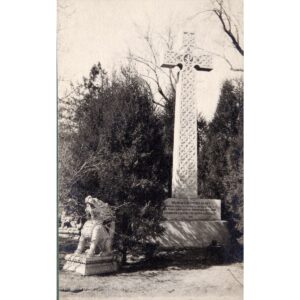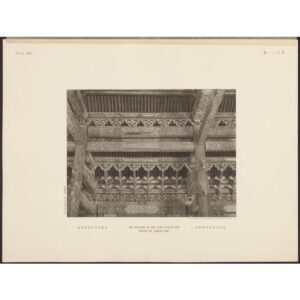Photography Junk on the Great Canal
A black-and-white photograph showing a junk with sails and its captain on the Great Canal (Da Yunhe 大運河). A junk is a type of Chinese sailing ship, 16 to 40 metres long. Because of their shape and carrying capacity, junks gradually became one of the most successful types of ship for river and sea navigation in history. They can be recognised by their characteristic sails.
The Great Canal, at 1,776 kilometres, is the longest canal in the world. It connects the Yellow and Long rivers from Beijing, Tianjin 天津, Hebei 河北, Shandong 山東, Jiangsu 江蘇 and Zhejiang 浙山 provinces all the way to Hangzhou 杭州. The oldest sections of the canal date back to the 5th century B.C. In the Sui Dynasty (581–618), the individual parts were connected into a whole. Later, in the Song Dynasty (960–1279), navigation on the canal was optimised by lock gates and levelling. The Great Canal was one of the most important transportation corridors. It enabled faster trade, a more ... more
A black-and-white photograph showing a junk with sails and its captain on the Great Canal (Da Yunhe 大運河). A junk is a type of Chinese sailing ship, 16 to 40 metres long. Because of their shape and carrying capacity, junks gradually became one of the most successful types of ship for river and sea navigation in history. They can be recognised by their characteristic sails.
The Great Canal, at 1,776 kilometres, is the longest canal in the world. It connects the Yellow and Long rivers from Beijing, Tianjin 天津, Hebei 河北, Shandong 山東, Jiangsu 江蘇 and Zhejiang 浙山 provinces all the way to Hangzhou 杭州. The oldest sections of the canal date back to the 5th century B.C. In the Sui Dynasty (581–618), the individual parts were connected into a whole. Later, in the Song Dynasty (960–1279), navigation on the canal was optimised by lock gates and levelling. The Great Canal was one of the most important transportation corridors. It enabled faster trade, a more vibrant economy and faster development of urban centres along the route. The southern part of the canal is still in operation today. It has been included in the UNESCO World Heritage List.
The photograph is the 150th of 449 photographs of Beijing and its surroundings in the album of Ivan Skušek Jr., purchased during his stay in Beijing (1914–1920). In the handwritten inventory of the album, the photograph is referred to as Dschunke am Kaiser-Kanal. (DZ, MV)



































Do you have a comment or additional information about the subject?